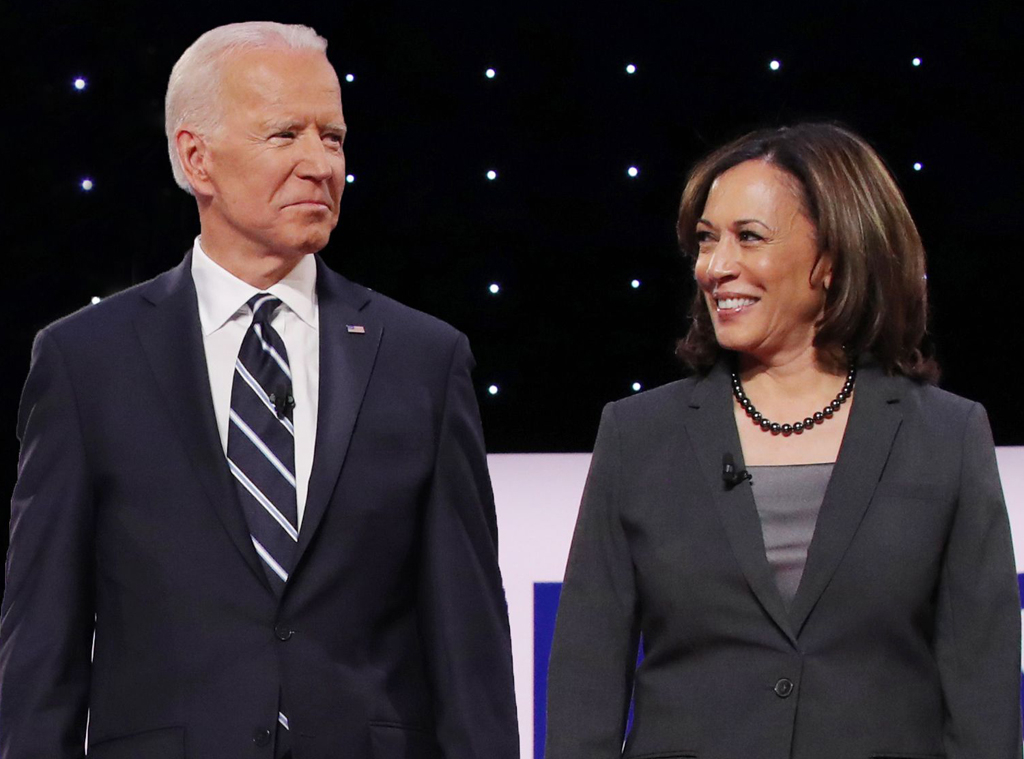 |
| From EFE.com |
Okay, I know lots of people are nervous about the election. Uncertainty, combined with astronomically high stakes, will do that. Another cause is the deliberate Republican strategy of using unreliable partisan polls to skew poll averages, manipulating the betting markets, and other unsavory tactics intended to create the impression they are winning big, which they hope will create a pretext for challenging the election results after they lose. A byproduct of this strategy can be to demoralize opponents in hopes they will not turn out to vote—or to energize Harris supporters to do precisely that.
Well, I cannot and do not intend to make anyone less nervous. I cannot lower the stakes, nor alleviate the uncertainty. But I can say why I, myself, am not particularly nervous (except about the Senate). I believe Kamala Harris will win the election and hold that belief with a high degree of confidence.
Let's start off by considering Trump’s likely victory conditions. In 2016, Trump won the Electoral College with just 45.9% of the popular vote. Though more than two full points below Clinton, he was able to prevail on the strength of several midwestern swing states. Remarkably, Trump then lost in 2020 despite improving his performance in the national popular vote to 46.9%. That time, the Midwestern swing states went to Biden by very small margins, as well as Georgia and Arizona.
As a simple heuristic then, to win the election Trump needs the swing states to basically be coin flips and then get lucky in enough of them. He can do that with somewhere around 46 to 47% of the popular vote. But if he drops too far below 46% in the popular vote, he’s probably not going to be competitive in enough swing states to win.
If we look at polls, Trump is right on target to pull this off. At the time of this writing, 270 To Win has Trump’s national polling average at 47.2%. That would be Trump’s best popular vote performance ever and actually beyond the range he needs to be competitive. Frankly, if Trump actually does win 47.2% of the national popular vote then Tuesday is going to be a very long night for the rest of us. With polling numbers like this, it’s no wonder people are nervous.
Yeah, well, fortunately the polls are crap.
The national polls underestimated Trump’s support in 2016, and underestimated it again in 2020 though by an even greater margin. As shown by this Pew Research Center graphic, not since 1972 have the polls missed in the same direction three cycles in a row.
That’s because posters use different sampling and weighting techniques and corrections to try and fix what they got wrong the previous time. There is polling error in every election, the only serious question is how big the error will be and which side it will favor. Average polling error in the past three presidential elections was 2.33 points—an amount that, were it to favor Harris, would bring Trump down under 44.9% nationally and leave him far short of the competitive range.
Though the polling error in this cycle cannot be predicted with certainty, the historical pattern suggests the polls are not likely to underestimate Trump’s support this time around; rather, it is far more probable the polls are overcorrecting for their past misses and overestimating Trump’s support this year—potentially by a significant amount. But since we ultimately have no way of knowing how much the polls will be off by this year, we must accept that the national polls simply don’t tell us anything useful. If we want to predict the election outcome, we will need to rely on other indicators.
So, how about state polls. Swing-state polls can tell us who leads in the states like to decide the election, hence revealing a picture of each candidate’s relative chances to reach 270 electoral votes. Yet the margins of error in state polls are so high that the results tend to be of minimal value when a state is close enough to be a swing state. Consider this recent poll of “Blue Wall” states conducted by Marist, an A+ rated independent pollster, which reported the following results:
Michigan:
Harris 51, Trump 48
Wisconsin:
Harris 50, Trump 48
Pennsylvania:
Harris 50, Trump 48
Wisconsin:
Harris 46.6 - 53.4, Trump 44.6 - 51.4
Pennsylvania:
Harris 46.6 - 53.4, Trump 44.6 - 51.4
So who’s really ahead in those states? We don’t know. This particular sample favored Harris but that doesn’t really mean anything. What matters are the ranges, and those ranges significantly overlap.
Okay, if we can’t tell anything from national polls and we can’t tell anything from swing state polls, then what else can we look at? Is there anything useful or do we just have to go into election day with no idea what to expect? Well, a month ago that might well have been the case. But early voting has been underway for several weeks now, so now we have extensive actual voting data. As of October 31, more than 67 million early votes had been cast—equal to roughly 40% of the 2020 electorate.
Of course, we don’t know who those 67 million people actually voted for. But there is enough information about who those voters are and where they live to draw some seriously defensible conclusions.
Let’s start with Wisconsin, where more than 1.27 million people have already voted early. According to Targetsmart (an election data modeling firm), about 436,000 of those voters are registered Democrats, about 320,000 are registered Republicans, and the remaining ~520,000 (about 40% of the total), are unaffiliated.
If we just assume as a baseline that all registered Democrats
will vote for Harris, all registered Republicans will vote for Trump, and the
unaffiliated voters will divide evenly between the two, then Harris would have
an early lead of about 116,000 votes. That’s not a bad lead—though perhaps not a
safe margin in a state with at least 2 million more votes likely to be cast
(assuming turnout equals or exceeds the 3.2 million votes from 2020).
There is more, however. First, Harris is significantly outperforming Trump among independents. A recent Marquette University poll, for instance, reported Harris leading Trump 57-42 among unaffiliated Wisconsin voters. If we apply that figure to the independent early voters, then Harris’ lead swells to 194,000 votes.
Second, Harris is winning Republican crossover support at a much higher level than Trump is winning registered Democrats. In the Marquette poll, for instance, Harris leads among Dems by a 97-2 margin, compared with Trump’s 94-6 advantage among Republicans. While bleeding some support to third-party candidates, this dynamic further expands Harris’ projected lead by about 16,500 more votes (to 210,500).
There are reasons to believe Harris’ early voting lead is actually even larger than these calculations suggest. One is that women, who favor Harris by significant margins (e.g., 53 - 36 in an Oct. 25 USA Today/Suffolk University poll) have been outpacing men in early voting (women are 51.3% of early voters in Wisconsin, though are outvoting men 55-45 in Michigan and Pennsylvania). Another is a Marist poll of early voters in Arizona, North Carolina, and Georgia which showed massive leads (12 points in AZ and NC, 10 points in GA) for Harris despite roughly even participation by registered Democrats and Republicans—and note that polls of voters who have already cast their ballots tend to be far more accurate than pre-vote polls.
One could easily veer into other reasons why early voters may favor Harris--e.g., perhaps they tend to be more mature people who understand that politics is serious business—and thus be more likely to reject Trump’s circus of hate and incompetence. But we're not doing that here; just taking a conservative, purely numbers-driven view of the Wisconsin data, Harris goes into election week with a lead north of 210,500 votes—more than 6% the size of Wisconsin’s 2020 electorate.
Now, voting is a four-quarter game and it’s certainly possible the Republicans could come back strong on election day and win Wisconsin anyway. But there is no apparent reason to expect that to happen. Republicans voted early in approximately equal numbers to Democrats in the 2022 midterm elections, and significantly outvoted (837k - 654k) Democrats early in 2020. So if they’re not showing up in 2024, it’s reasonable to presume Republican turnout is just down— which makes sense considering they have less enthusiasm (75-66 Dem lead in Wisc), a terrible candidate (net -14 favorability in Wisc) and a legendarily dreadful ground game.
Not only is Wisconsin looking very good for Harris, but the numbers aren't a whole lot different in the rest of the Blue Wall. In Michigan,
modeled predictions show 1.66 million early votes from registered Democrats
versus 1.11 million by Republicans. In Pennsylvania,
which has early voting by mail only, Dems lead nearly 2:1 (932,546 to
560,906)—though the total number of early votes there represents a much smaller
portion of the overall electorate than in Michigan or Wisconsin.
For just these reasons alone (there are plenty more, like this jackass's), Harris supporters really should go into Tuesday night with high confidence. The Blue Wall looks intact, and those three states (plus the Nebraska “blue dot,” which Harris comfortably leads as well) are sufficient to reach the magic 270. Harris’ chances in the remaining swing states (AZ, NV, GA, and NC) do look much more 50:50, though none is necessary to win except as insurance against MAGA mischief. Even so, even odds with five states in play means the most likely outcome is she wins at least two, with the probability of a Trump sweep in those five states far lower.
If you can allow two lines of feels, personally I think Trump will come under 45% nationally and Kamala will win at least four swing states. LFG
Now about that Senate…
















